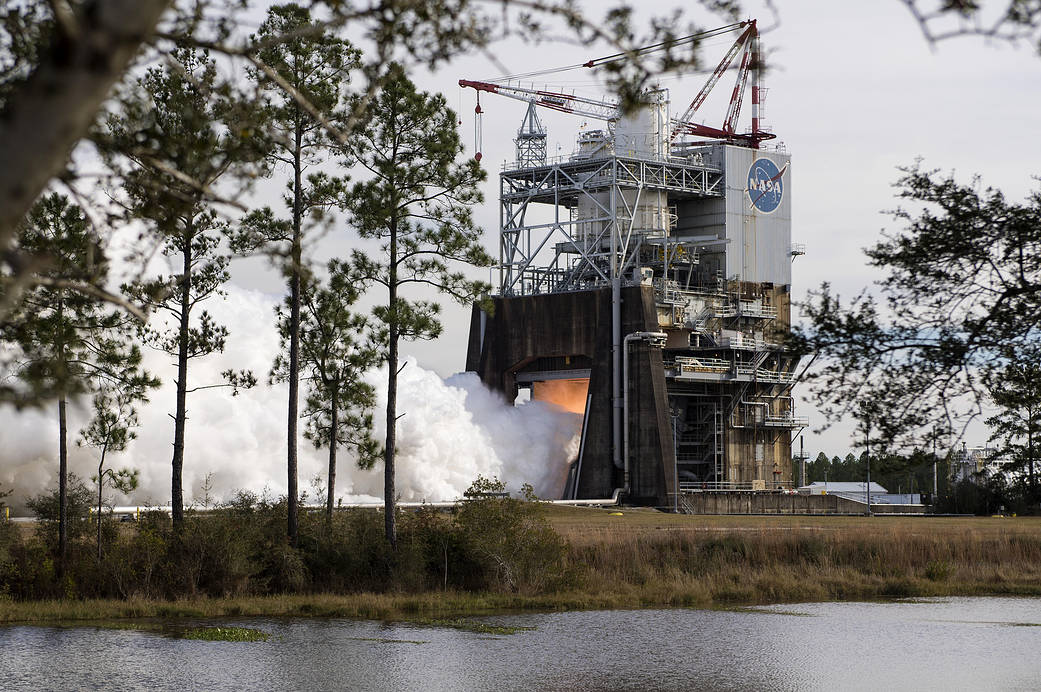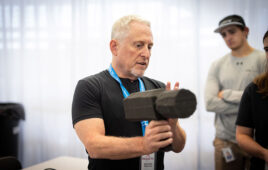
Caption: NASA is preparing a new engine with a 3D printed part. Credit: NASA
The new engine for the world’s most powerful rocket passed its final test of the year last week.
NASA officials gave the all-clear sign on Dec. 13 for the RS-25 rocket engine at the NASA Stennis Space Center in Mississippi after the rocket underwent a 400-second hot fire.
The engine included a 3D printed part called a pogo accumulator assembly—which is designed to act as a shock absorber to dampen vibration, or oscillations caused by propellants as they flow between the vehicle and the engine.
The aim of the testing, according to a space.com article, was to put a flight controller through its paces.
According to the article, NASA as well as industry partner Aerojet Rocketdyne are using 3D printing and other new techniques in an effort to reduce the costs of development engines without sacrificing safety or reliability. 3D printing could reduce the number of welds required for manufacturing.
The new rocket is being used to prepare for NASA’s Space Launch System rocket’s first flight around the moon, which is scheduled to begin in 2019 or 2020. The initial flight—being dubbed Exploration Mission 1—will use the SLS to send an Orion spacecraft around the Moon and back to Earth without a crew. A crewed mission is expected to follow the initial mission years later.
The initial flights will utilize modified RS-25 engines previously used from the space shuttle program that ran between 1981 and 2011.
The engine also includes a new controller that acts like a brain to communicate with flight computers to ensure the engines are performing as designed.




